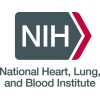
Retrovirus Epidemiology Donor Study-II (REDS-II)
Acquired Immunodeficiency SyndromeBlood Donors13 moreTo conduct epidemiological, laboratory, and survey research on volunteer blood donors within the United States to ensure the safety and availability of the United States' blood supply.

Epidemiological Study in Children and Adolescents With Chronic Hepatitis B
Liver DiseasesHepatitis11 moreThe purpose of this study is to collect epidemiological data in children and adolescents with chronic hepatitis B(CHB), in particular data on the prevalence of HBeAg positive disease with associated ALT levels , active HBeAg negative disease and decompensated CHB in the pediatric population. Family history and history of HBV transmission is essential to assess the course of the disease and can be used to determine the best mode of treatment This information will be used to assist with the feasibility and design of studies for the Novartis clinical pediatric development program, as the current epidemiology of ediatric CHB is not accurately known in Western countries or the rest of the world making pediatric studies difficult to plan and conduct. This study forms part of the Novartis Pediatric Investigational Plan, a post marketing approval commitment to the EMEA Pediatric Committee.

Prospective Study of HIV Infection in Hemophiliacs
Acquired Immunodeficiency SyndromeHIV Infections7 moreTo examine mechanisms of individual differences in the progression of HIV infection in hemophiliacs.

Risk of Post Transfusion Hepatitis C Virus Infection
HepatitisViral3 moreTo determine the risk of transfusion-transmitted hepatitis C virus (HCV) in cardiac surgery patients before and after donor screening for anti-HCV and surrogate markers of non-A, non-B hepatitis (NANBH). Also, to characterize donors who were HCV seronegative and who lacked surrogate markers at the time of donation, but whose recipient seroconverted to HCV.

A Study of Molecular and Genetic Factors for Liver Cancer in the Greater Baltimore Area
CarcinomaHepatocellular9 moreBackground: Liver cancer is the third most deadly and fifth most common cancer worldwide. Hepatocellular carcinoma (HCC) is the most frequent primary liver cancer, and it has grown more prevalent in the United States. More information is needed about the causes and effects of liver cancer, and further research into individuals who are at high risk for developing liver cancer is needed for early diagnosis and prevention. Objectives: To identify genetic factors that may help to explain the aggressiveness of liver cancer. To determine if HCC biomarkers exist in blood, urine, and tissue samples. Eligibility: Patients between the ages of 18 and 90 who have been diagnosed with HCC or have a high risk for developing HCC because of fatty liver disease (alcohol-related or non-alcohol-related) or chronic hepatitis B or C. Participants will reside in Baltimore City and the surrounding areas. Design: Participants will complete a questionnaire and provide blood and urine samples for testing: The questionnaire will include questions about individual and family medical history, tobacco use, and exposure to known factors for liver cancer. Blood and urine samples will be collected from all participants after the questionnaire. Tumor tissue and healthy tissue will be collected from selected participants if they undergo surgery for their cancer or disease. No specific treatment will be offered as part of this protocol, but participants have the option to be treated under different protocols.

Hepatitis Delta Infections in Hemophiliacs
Blood DiseaseHepatitis4 moreTo elucidate the role of hepatitis delta virus (HDV) in the development of chronic liver disease in patients with hemophilia.

Genes Involved in Resistance or Susceptibility to Hepatitis B Virus
HepatitisViral1 moreThis study, conducted by the Beijing University First Hospital of China and the National Cancer (NCI), will try to identify genes associated with either susceptibility or resistance to chronic infection by the hepatitis B virus (HBV). Some people recover from HBV infection; others become chronically infected and may go on to develop severe liver disease such as cirrhosis or liver cancer. About 350 million people worldwide have chronic HBV infection. Of 120 million infected Chinese, 90 percent of children infected at less than 5 years of age and 10 percent of infected adults develop persistent infection. HBV-infected and non-infected healthy persons of Han ethnicity born before 1963 may be eligible for this study. Offspring of infected candidates (born in any year) may also be enrolled. Infected adults must have at least one infected parent or sibling. Persons who resided in Fusui County of Guangxi Zhuang Autonomous Region or in the Qidong district of Jiangsu Province for at least 6 months before 1986 may not participate. All participants (except offspring of the study subjects) will fill out a health questionnaire (providing information about eating, drinking, and smoking habits and a personal and family health history) and will donate no more than 20 milliliters of blood. The blood will be tested for antibodies, antigens, and other substances that may indicate infection with hepatitis viruses. Some of the blood will be sent to the NCI for DNA analysis to identify genetic factors that may influence clearance of the hepatitis virus after infection or progression to liver diseases associated with HBV infection. Infected patients who have had a liver biopsy in the past will be asked permission to examine tissue from the biopsy and to review laboratory results of any tests done for diagnostic and treatment purposes. When the study is completed, specimens sent to the NCI will have identifiers linking the material to the donor removed. The anonymous samples may then be used for other genetic studies. Specimens remaining in China will continue to have identifiers linked to them and may be used for future studies designed to identify who is at greatest risk of developing serious liver diseases. Participants who do not want their blood used for future studies may request that the samples be destroyed. Because children inherit one-half of their DNA from each parent, DNA samples from HBV infected study participants may provide additional information about the parent s DNA structure. Offspring who participate in this study will provide a DNA sample. The sample is obtained by swishing a mouthwash in the mouth for 30 seconds and then spitting the mouth wash into a cup. The DNA is then isolated from the mouth cells.
